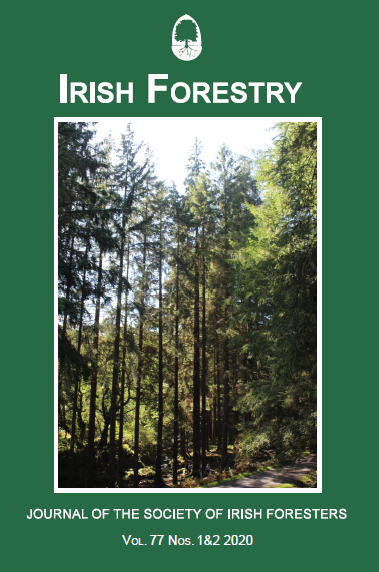A National Forest Tree Gene Conservation Strategy and Action Plan for Ireland
Keywords:
Forest Genetic Resources, FGR, Conservation, Genetic characterisation
Abstract
Forest Genetic Resources (FGR) are the basis on which the health of future forests are dependent. It is genetic diversity that enables trees to adapt to conditions and optimise their performance to succeed. A lack of diversity increases the vulnerability of a population or species to changing conditions and pathogens, while a greater diversity is a potential buffer against biotic and abiotic change. This paper undertook a review of international practice in FGR conservation and proposes a strategy to implement in an Irish context. Dynamic in situ conservation has been adopted as the best practice for the conservation of FGR in most cases. The dynamic approach is often referred to as a “near-nature” approach and the focus is to maintain adaptive potential in natural or semi-natural populations. A network or group of sites is also considered best practice in FGR conservation. This has been implemented in the EUFORGEN pan-Europeanconservation network. Selection of the individual populations or sites to include in the network is dependent on the availability of data. The selection criteria are addressed in the strategy proposed. In order to conserve genetic variation, it is important to be able to assess the actual or potential level of this variation. Where data is lacking, proxies such as climatic conditions can be used. A table of actions for the implementation for the strategy is presented.
Published
2020-12-31
How to Cite
Kelleher, C. (2020) “A National Forest Tree Gene Conservation Strategy and Action Plan for Ireland”, Irish Forestry, 77(1&2), pp. 7-32. Available at: https://journal.societyofirishforesters.ie/index.php/forestry/article/view/10983 (Accessed: 27July2024).
Issue
Section
Articles



